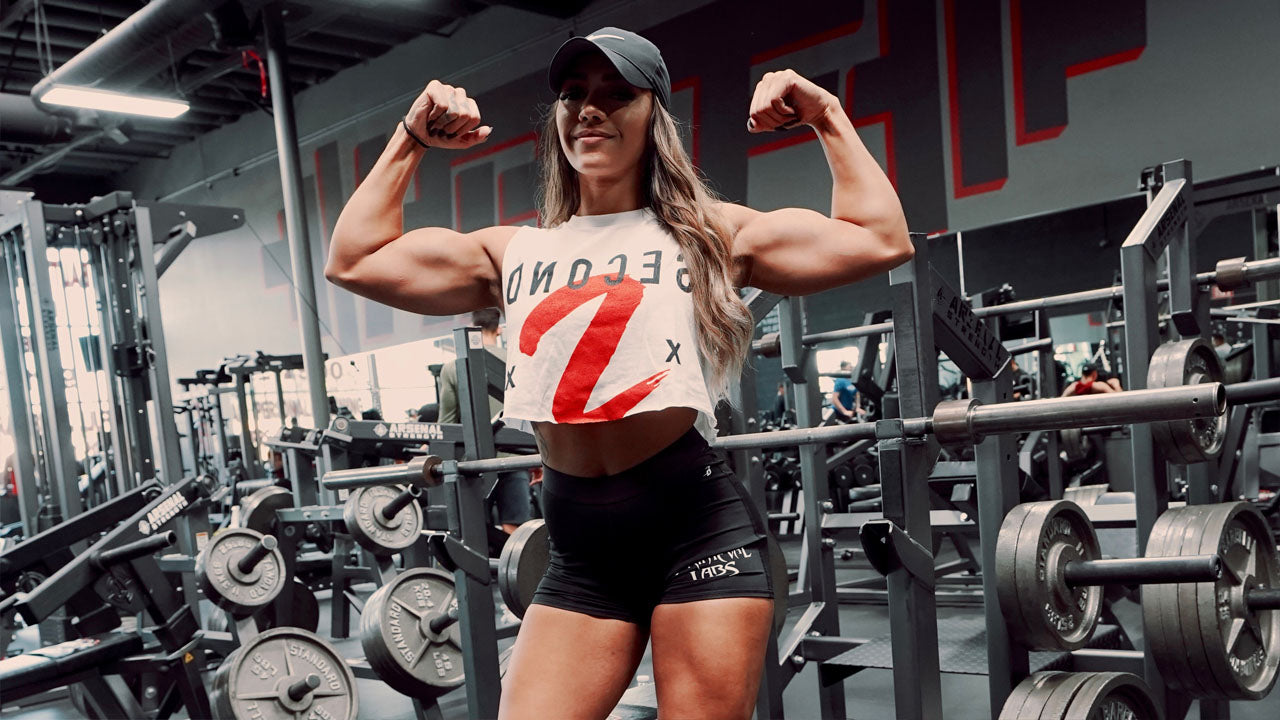Bodyweight exercises are a great option while traveling if you're short on time and/or don’t have access to your usual lot of barbells, dumbbells, cables, and machines.
However, after gaining a base level of muscle and strength, many lifters make the mistake of thinking that bodyweight exercises are only good for losing fat, “toning”, or as a finisher following their heavier barbell-based exercises.
But trust us, bodyweight exercises provide a phenomenal training option for individuals looking to build muscle or gain strength regardless of their current fitness level.
Today, we’re going to show you how to build a bigger, stronger upper body with bodyweight exercises.
Bodyweight Bodybuilding Pointers
Apply Progressive Overload
The fundamental principle behind building muscle and strength is progressive overload.
Progressive overload holds that in order for muscles to grow bigger and stronger, they must be forced to “do more” than they previously have.
Now, this “do more” can take many forms, and some forms of progressive overload are more practical in certain situations than others.
But, at the end of the day, if you aren’t making your muscles “do more” than they previously have, then you’re not gaining muscle or strength.
The most basic form of progressive overload is adding weight to the bar, and since bodyweight exercises typically don’t include a barbell, many people mistakenly think that bodyweight exercises can’t be overloaded.
This is completely and utterly wrong.
The truth is, you can progressively overload bodyweight exercises in a number of ways, including adding weight.
Other ways you can apply progressive overload to your bodyweight exercises is by:
- Increasing reps
- Adding sets
- Using eccentrics to increase time under tension
- Decreasing rest
- Performing more advanced variations of standard bodyweight exercises (ex. Handstand push ups vs standard push ups, pull ups vs chin ups, etc.)
- Supersetting competitive exercises (ex. dips followed by pushups)
- Increasing frequency
- Increasing range of motion
- Changing leverages to increase tension in the muscle (ex. Decline push ups vs standard push ups)
Of course, you can always add external loading to bodyweight exercises, in the form of a weight vest, holding a dumbbell, or attaching some weight to a dip belt.
Now, will you be able to maximize absolute strength using only your bodyweight?
No, but that’s not the point of this article.
To build bigger muscles, you need to focus on three things:
- Mechanical tension
- Metabolic stress
- Muscle damage
These are the three mechanisms of hypertrophy, and they can all be sufficiently addressed with bodyweight exercises.
For example, if standard chin-ups are too easy for you, you can incorporate pauses at the top or midpoint of the movement.
Or, you could add external loading in the form of hanging a plate from a weight belt.
Still another way is to perform a more advanced version of the chin up, such as a “v-chin up”, towel pull ups, narrow grip pull-ups, etc.
Whichever method you choose for progressing an exercise is up to you, but realize that you need to pick some way to increase the difficulty of your training and make your muscles do more.
Consume a Calorie Surplus
At the end of the day, if you want to gain weight and build muscle, you need to feed your body enough calories to do so.
Calories provide your body with the energy it requires to build and repair muscles as well as replenish energy stores.
With the exception of gym newbs or very overweight individuals (who can build muscle while eating at maintenance or in a deficit), this means you need to be in a calorie surplus, whereby you consume more calories than you burn each day.
If you need help figuring out how many calories to eat to build muscle (or lose fat), click here.
Eat Enough Protein
Not only is it important to consume enough total calories when wanting to build muscle with bodyweight exercise, but so to is consuming enough protein.
Protein supplies your body with the building blocks it need (amino acids) to repair damaged muscle tissue and support the construction of new muscle protein.
Current best practice is to consume between 0.8-1 gram of protein per pound of bodyweight.
The best sources of protein are "complete" protein sources, meaning they contain all the essential amino acids that the body requires to support protein synthesis (aka muscle growth and repair).
Some of our favorite protein sources include:
- Beef
- Chicken
- Turkey
- Fish
- Pork
- Shellfish
Having a high-quality protein powder also makes hitting your protein requirements each day easier (and more enjoyable).
Primeval Labs offers two delicious-tasting protein powders in ISOLIT and WHEY.
Sleep 7-9 Hours Per Night
Training and nutrition have to be on point in order to gain muscle and strength, but so too does your sleep habits.
If you’re not getting enough sleep each night, you’re severely undercutting your recovery and growth potential as well as your ability to overload your muscles in the upcoming workout, which as we just discussed is a core principle of muscle building.
Sleep deprivation also disrupts energy metabolism, nutrient partitioning, cognitive function, and hunger/satiety signaling.
All of this is to say that you need to get enough sleep each night if you want to maximize your muscle-building potential.
Instituting a bedtime routine can help tell your body it’s time to “power down” at night. You also may want to try avoiding exposure to blue light (TV, laptop, cell phones, tablets, etc.) within 2 hours of bed. And, if you’re caffeine sensitive, cut off your intake of the stimulant by 3PM.
Lastly, if you need help relaxing and “turning off” a busy mind, you can try a quality sleep supplement, such as EAA Sleep.
Work Hard & Have Patience
Gaining mass for the natural lifter is hard.
There are no two ways about it.
The body likes the way it is, and it must be forced to change and adapt, which means you are going to have to train hard...really hard.
Now, does this mean you need to take every set to failure and be on the verge of puking by the end of every workout?
No, of course not.
But, you should be able to look back at your workout and honestly say whether you gave it your all.
If you’re sandbagging your workouts, you can’t expect to make much progress.
In other words, if you can bang out multiple sets of 20 reps of an exercise without breaking a sweat, then you’re not pushing yourself. You need to find a way to make the exercise more challenging so that you struggle the complete the last few reps.
Finally, understand that building muscle takes time, especially if you’ve been training for several years. However, with hard work, patience, and consistency, gains will come.
Now, let’s get to the workout!
Upper Body Bodyweight Workout
Workout #1
|
Upper Body Workout #1 |
||
|
Exercise |
Sets |
Reps |
|
Pull Ups |
4 |
6-12 |
|
Handstand Push Ups (Use wall-assist if needed) |
4 |
8-10 |
|
Inverted Row |
4 |
10-15 |
|
Feet-Elevated Push Ups |
4 |
15-20 |
|
TRX Bicep Curls |
2 |
10-12 |
|
Bodyweight Tricep Extension |
2 |
10-12 |
*Rest: 2 minutes between sets
Workout #2
For this upper body workout, you will perform an exercise at the start of every other minute.
So, perform your first set of pull ups as you start the clock. When you approach failure, stop the set and you rest until the clock hits the 2:00 minute mark.
- Neutral Grip Chin Ups (3 sec eccentric)
- Chest Dips (1.5 reps)
- Inverted Rows
- Archer Push Ups
Cycle through this circuit a total of 4-6 times depending on time and fitness level.
If you can perform more than 12 reps of an exercise for every set of the workout, pick a harder variation.
















Leave a comment
This site is protected by hCaptcha and the hCaptcha Privacy Policy and Terms of Service apply.